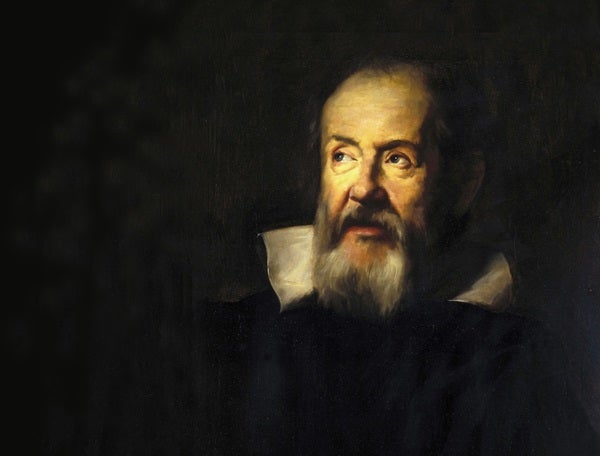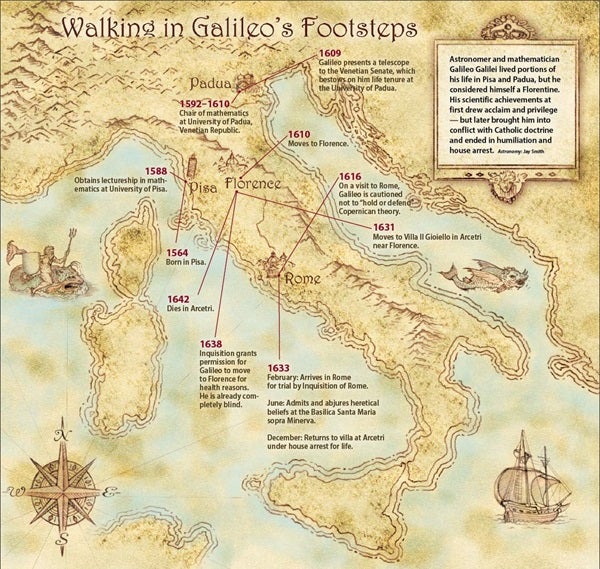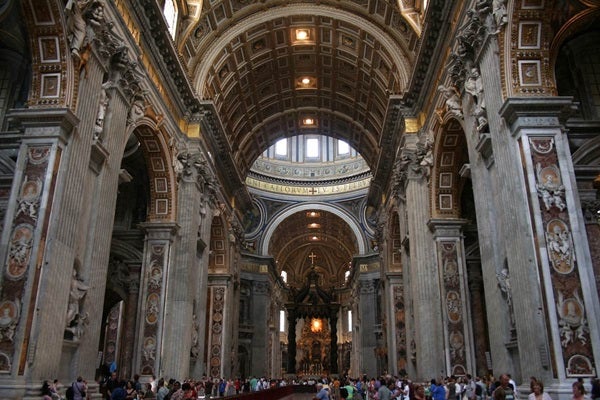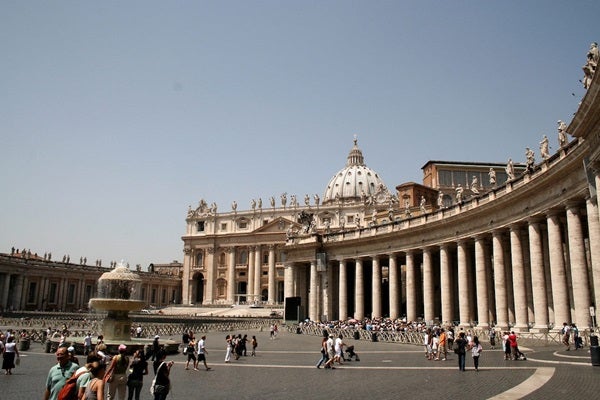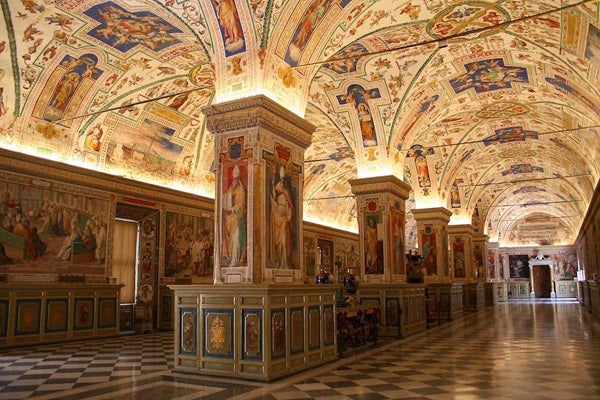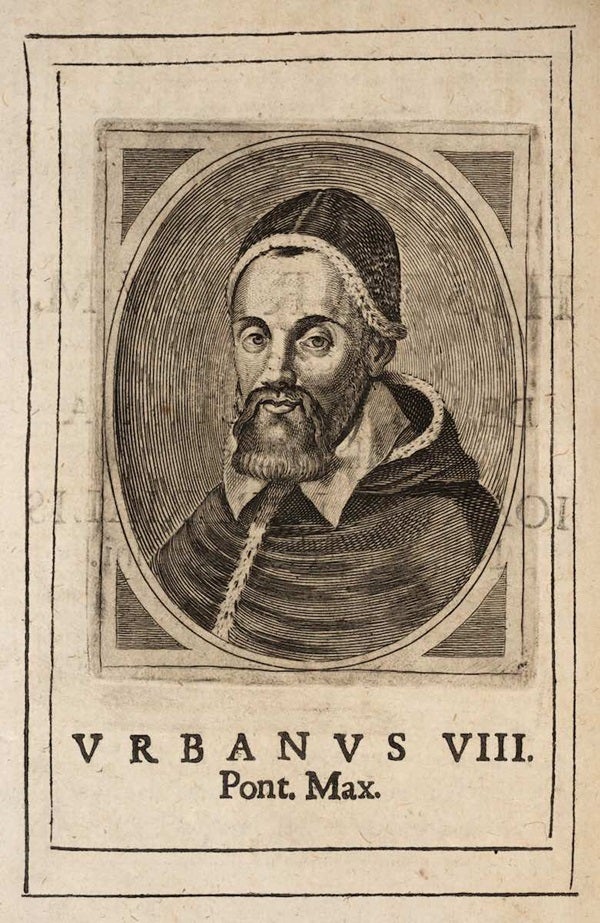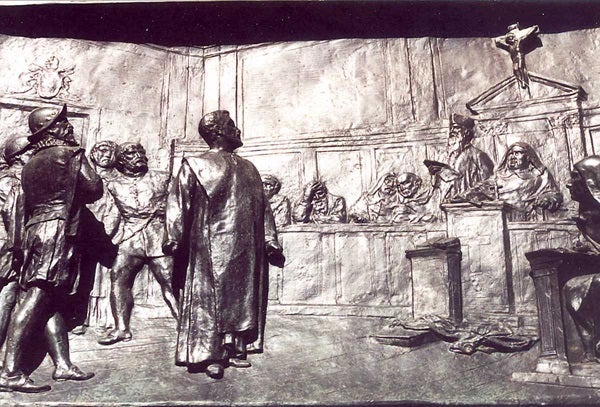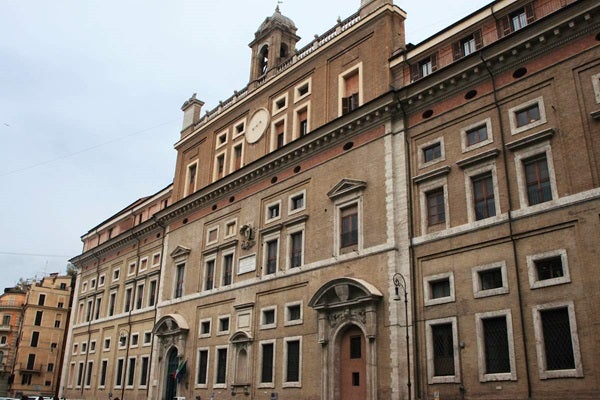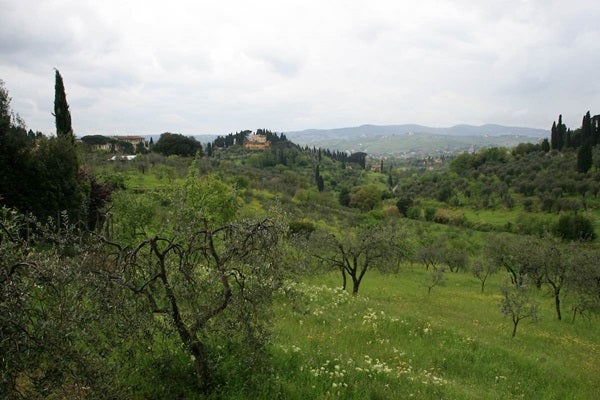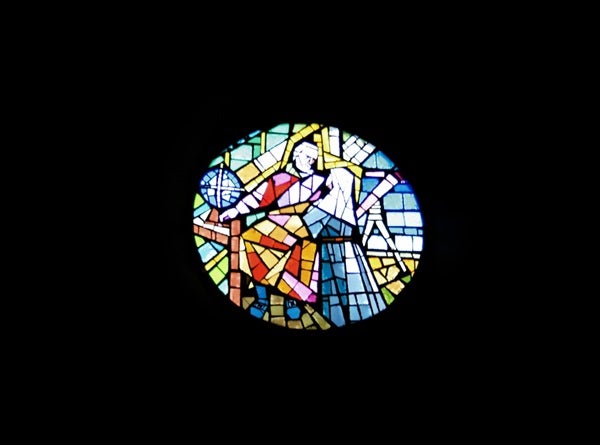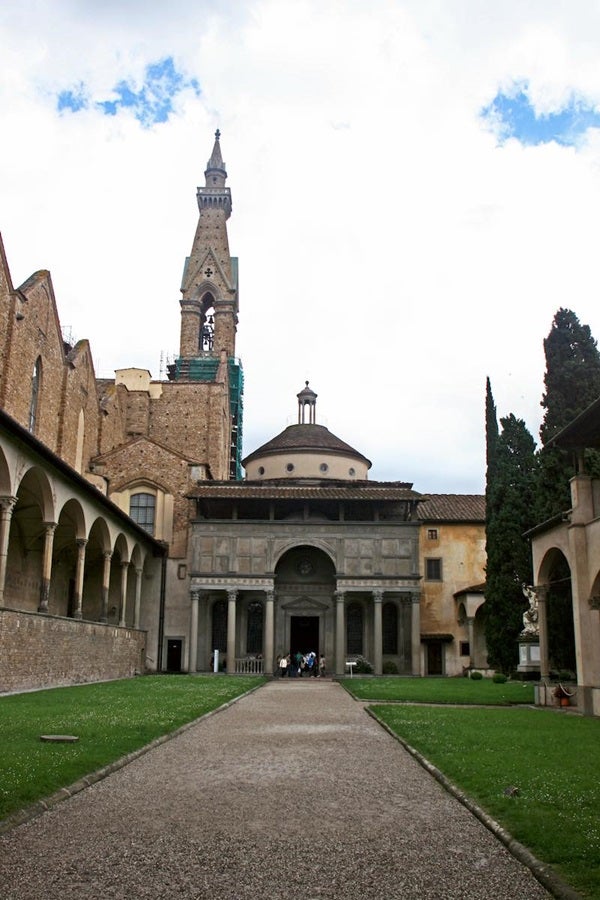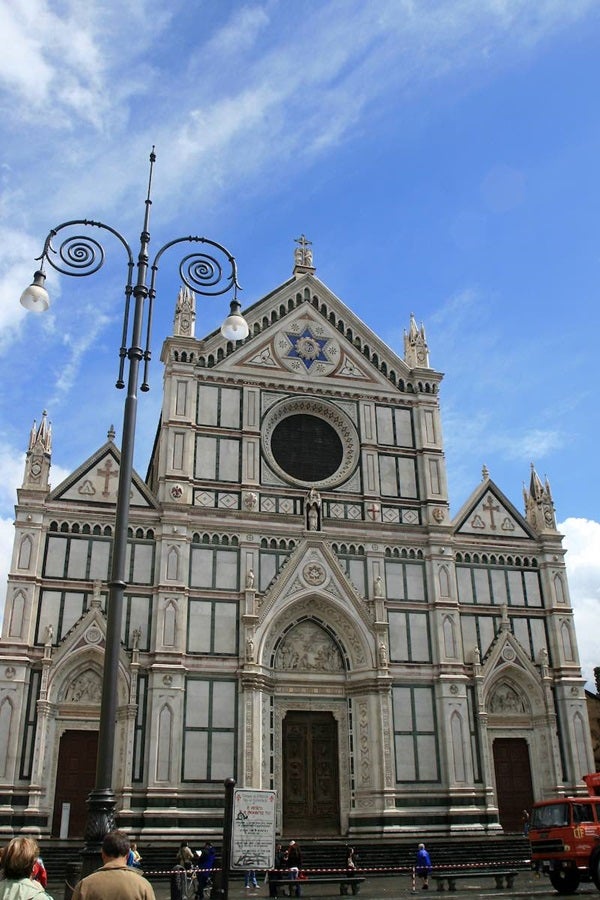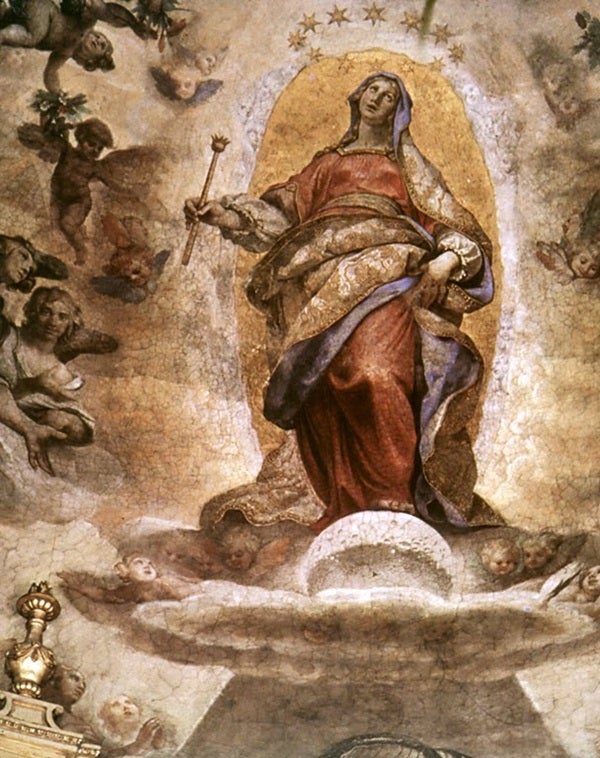It isn’t hard to find the influence of Galileo Galilei (1564–1642) on the history of astronomy. After all, he was the first to use a telescope to study the heavens systematically and objectively. He discovered the Moon’s craggy mountains, Jupiter’s four major satellites, and the phases of Venus.
But that’s Galileo the scientist. Who was the man?
To find some clues, I went to Rome and Florence, where Galileo spent the prime of his life and ended up under house arrest for life after a disastrous encounter with the Roman Catholic Church. I decided to retrace the master’s footsteps in Italy — to visit the places where he lived and worked in hopes of absorbing something of the spirit of the times in the 17th century when Galileo helped overturn what people thought they understood about the celestial realm.
Roman rendezvous
Numerous people, such as the English poet John Milton, began to beat their way to Galileo’s door even during the great man’s lifetime. For logistical reasons — airport location — I started in Rome, where Galileo became a martyr for science. Lost among the strata and ruins of millennia, his footprints are barely traceable among those of the millions who have lived and died in the ancient city.
The Roman palaces of the Caesars and the temples of antiquity are melancholy ruins. Ransacked by the renaissance and baroque popes, they are mere shells gutted for raw materials to furnish monuments and tombs. Even the Caesars and popes who ruled here, whose power once reached out across the known world, are lost in the accumulated wreckage of the ages. Yet it is possible to find traces of Galileo’s life within the walls of Vatican City, the sovereign state nested within Rome’s boundaries.
St. Peter’s Basilica is among the Vatican’s most impressive monuments. Inside, I combed various tombs and eventually found the crypt of Paul III (1468–1549), the pope to whom Copernicus dedicated De revolutionibus orbium coelestium (“On the Revolutions of the Heavenly Spheres”). The 1543 treatise detailing a Sun-centered cosmos captured Galileo’s imagination and ultimately contributed to his downfall.
Paul III rests on one side of the Cathedra Petri, an elaborate reliquary containing a wooden chair purported (falsely) to be the throne of St. Peter. On the opposite side of the Cathedra Petri molder the remains of a critical player in Galileo’s life: Maffeo Barberini (1568–1644).
Barberini was once Galileo’s friend and supporter. But after becoming Pope Urban VIII in 1623, he demanded Galileo’s prosecution for allegedly upholding the Copernican theory, although really for disobedience to church authority in an age of absolutism.
Urban was not a lovable character. When he died, the citizens of Rome, who had long sweated under the yoke of financing his construction projects and wars, expressed their gratitude to him by toppling one of his busts.
In the Vatican Museums en route to the Sistine Chapel, I couldn’t resist poking my head through some of the open windows into the gardens. I thought of the birds that Urban had ordered killed so they wouldn’t interfere with his sleep.
Galileo, heretic
Galileo had come to Rome in 1611 and triumphantly demonstrated the telescope to the Jesuits of the Collegio Romano, who after months of trying had finally confirmed his observations. He returned in 1616 to meet with Cardinal Bellarmine, who warned him not to “hold or defend” the literal truth of the Copernican system.
In private, Bellarmine and the ruling prince of Rome, Pope Paul V, were inclined to declare Copernicanism heretical. However, Cardinal Caetani and Barberini dissuaded them. When Barberini was elected pope, Galileo anticipated a new golden era for liberal Catholics.
After meeting with Urban, Galileo thought he had received permission to write a book, Dialogue Concerning the Two Chief World Systems (1632), as long as he didn’t hold or defend the Copernican system. In the book, three characters debate the merits of the Sun-centered Copernican system versus that of the traditional Earth-centered cosmos.
But Galileo miscalculated by presenting Pope Urban’s own arguments in the mouth of a dimwitted character named Simplicio. The offended pope unleashed the Inquisition of Rome, which called Galileo to the Vatican for trial in 1633. After waiting 2 months in the Villa Medici, the astronomer was finally questioned by the Inquisitors.
Galileo was prosecuted on the basis of a questionable injunction retrieved from the Vatican Secret Archives. Dating to 1616, the document was neither signed nor notarized. It claimed Galileo had agreed not to hold or defend the Copernican theory or to discuss it, as he clearly had in Dialogue. The Inquisition condemned Galileo on “vehement suspicion of heresy.” He remained under house arrest until his death in 1642.
The persecution of Galileo was not without precedent. A statue stands in the Campo del Fiore in Rome, where in 1600 Giordano Bruno was burned at the stake for teaching heretical views such as the Copernican doctrine.
Young Galileo’s Italy
Rome was merely the stage on which Galileo’s late downfall played out. He spent most of his years in Pisa and Florence, in the northern province of Tuscany, and in Padua, then part of the Venetian Republic.
Galileo was born in Pisa February 15, 1564, and later pursued his education at the University of Pisa. Even then, the scientist in Galileo was blooming. He reportedly began to consider the laws that govern the swing of a pendulum while observing the motions of a swinging chandelier in the town’s cathedral.
However, Galileo ran into the opposition of conservative scholars in Pisa. He moved on to Padua, where he lectured in mathematics and made all the telescopic observations of the Moon and Jupiter described in his 1610 book, Sidereus Nuncius (“Sidereal Messenger”).
The telescope and one of Galileo’s fingers — still pointing heavenward after all these years — are preserved in Florence’s Institute and Museum of the History of Science. The lens, cracked in Galileo’s lifetime, is carefully protected behind glass at the museum. The sight of it sent more shivers down my spine than the cumulative effect of all the tombs of the popes in St. Peter’s. It was with such a lens that Galileo made the most important series of astronomical discoveries ever.
In Florence, Galileo continued to produce important scientific works. At the palatial Villa L’Ombrellino, where he lived from 1617 until 1631, he wrote Il Saggiatore (“The Assayer”), a treatise on mathematics and physics, and the Dialogue that led to his persecution.
Into the Tuscan hills
Galileo doubtless journeyed often to the outskirts of Florence to the Convent of San Matteo where his two daughters by his Venetian mistress Marina Gamba were cloistered. Virginia, who took vows as Sister Maria Celeste, was the eldest and his favorite. The sister is the heroine of Dava Sobel’s bestselling book Galileo’s Daughter, which poignantly reveals the depth of the bond between father and daughter. Sister Maria Celeste baked her father cakes and starched the broad white collars in which Sustermans, the official painter to the Medici court, would later paint him. (Gaze upon the original in Florence’s Uffizi Gallery.)
In 1631, Galileo, now 67 years old, moved to the Villa Il Gioiello, “the jewel,” to be closer to his daughters. From the villa, set on the hill of Arcetri south of the city, Galileo could see the convent. It’s on the street below the tower called the Torre del Gallo, reputed to be the place where Galileo conducted experiments and observations.
The trip to Arcetri is unforgettable. One route begins at the ramparts of the Fort Belvedere. Then one proceeds into the countryside along the narrow and enchanting Via San Leonardo between enclosed walls and groups of fine houses.
The route also winds past the Osservatorio Astrofisico di Arcetri (the Arcetri Astrophysical Observatory), which still conducts astronomical research today. It is just a stone’s throw from Galileo’s villa and easily visible, below the Torre del Gallo, on the hills in the near distance.
The Convent of San Matteo is just down the street from Il Gioiello, where admirers of Galileo’s Daughter would enjoy visiting. Unfortunately, fire almost completely destroyed the original structure. Only the dining area, or refectory, remains of the walls within which Sister Maria Celeste spent her life while her father explored the sky. Don’t miss the modern stained glass in the convent chapel depicting Galileo and his daughter.
The end days
At Il Gioiello, Galileo watched the candle burn out of his last days as a prisoner under house arrest. The untimely death of his favorite daughter in 1634 — a blow from which Galileo never really recovered — came the year after his prosecution in Rome. The same year, suffering from a painful hernia, he applied to the Inquisition to be allowed to move to Florence to be closer to his doctors. The church officials refused his petition and warned him that any further requests would land him in prison.
Alone, depressed, and in constant ill health, he worked to complete his masterpiece, Discourse on the Two New Sciences, which laid the foundations of modern physics. The book was smuggled out of Italy and published in 1636 in the Netherlands.
Galileo made his last astronomical discovery — the Moon’s slight wobble, or “libration” — in July 1637. At the time he was able to see only a bit with his left eye. Months later, he went completely blind.
At last, in 1638, the Roman authorities showed mercy to Galileo. He received permission to move for several months to his house in Florence so that he could more easily visit his doctors. After this brief interlude, he was back at Il Gioiello in September 1638 when John Milton, a 30-year-old poet from England, visited him there, “in darkness, and with dangers compassed round.”
Galileo died January 8, 1642. At first — because Urban continued his persecution of Galileo even in death — the astronomer was not allowed burial in the main church in Florence. So he rested for more than a century in the small convent chapel in Florence before finally being reinterred in a grand tomb in the main church, the Basilica di Santa Croce. Galileo’s resting place is right across from the tomb of Michelangelo.
Grand as his baroque tomb is, don’t look for Galileo’s monument there. Rather, gaze at his heavens. Look at the Moon, at Jupiter with its ever-revolving satellites, at Venus whose phases he first saw, at the Milky Way with its innumerable stars. These celestial objects will carry Galileo’s name to future generations.
For another testament to how radically Galileo changed our perception of the celestial realm, seek out the Assumption of the Blessed Virgin. It’s a work by Galileo’s Florentine friend, the painter Cigoli. The fresco remains today at one of the most prominent religious sites in Rome, the Pauline Chapel of the Basilica di Santa Maria Maggiore.
In his last work, Cigoli painted a portrait of the Blessed Virgin unlike any other. Other portraits portrayed Mary standing on a perfectly smooth and unblemished representation of the Moon. Earth’s luminous satellite, after all, was a symbol of purity — just like Mary. But Cigoli’s 1612 painting shows the Virgin’s feet upon an orb with craggy craters and mountains — Galileo’s Moon.
On my last morning in Florence, I rose before dawn to catch a cab to the airport. On the way, Galileo’s Moon played hide-and-seek with the clouds. I could not help thinking of what the 19th-century French astronomy writer Flammarion wrote when Florentine astronomer Giovanni Battista Donati placed one of Galileo’s telescopes in his hands.
“After sunset I recaptured the spirit of the Florentine astronomer on one of the beautiful Italian terraces just as the stars were coming out,” Flammarion recalled. “With feverish impatience I turned this marvelous tube toward the new worlds that he had discovered in the heavens. I recalled that he had shown these sights to those who were incredulous; he still shows them to us today from his grave.”
William Sheehan is an author, psychiatrist, and amateur astronomer in Willmar, Minnesota. His latest book is A Passion for Planets, was published by Springer during the International Year of Astronomy in 2009.

